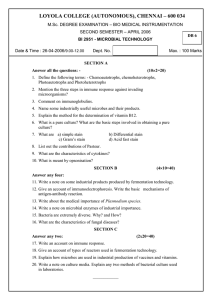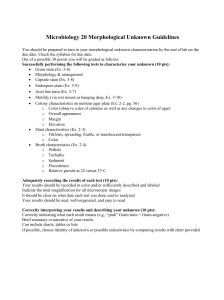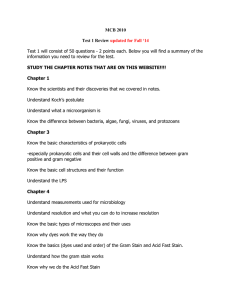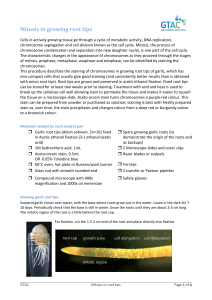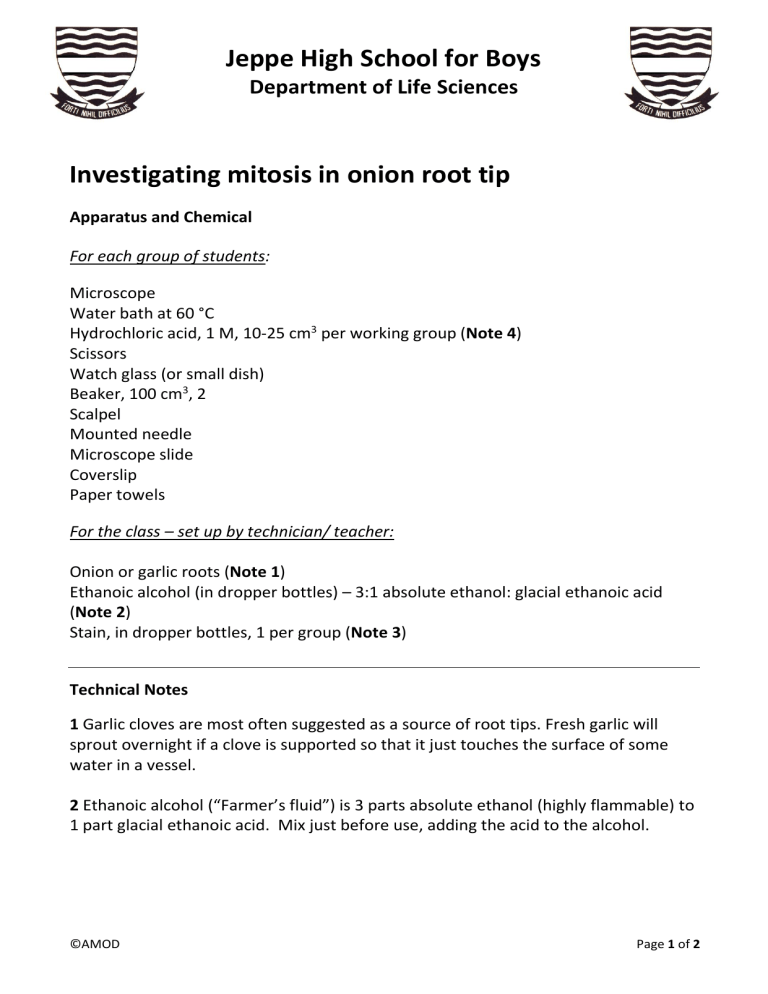
Jeppe High School for Boys
Department of Life Sciences
Investigating mitosis in onion root tip
Apparatus and Chemical
For each group of students:
Microscope
Water bath at 60 °C
Hydrochloric acid, 1 M, 10-25 cm3 per working group (Note 4)
Scissors
Watch glass (or small dish)
Beaker, 100 cm3, 2
Scalpel
Mounted needle
Microscope slide
Coverslip
Paper towels
For the class – set up by technician/ teacher:
Onion or garlic roots (Note 1)
Ethanoic alcohol (in dropper bottles) – 3:1 absolute ethanol: glacial ethanoic acid
(Note 2)
Stain, in dropper bottles, 1 per group (Note 3)
Technical Notes
1 Garlic cloves are most often suggested as a source of root tips. Fresh garlic will
sprout overnight if a clove is supported so that it just touches the surface of some
water in a vessel.
2 Ethanoic alcohol (“Farmer’s fluid”) is 3 parts absolute ethanol (highly flammable) to
1 part glacial ethanoic acid. Mix just before use, adding the acid to the alcohol.
©AMOD
Page 1 of 2
JEPPE
FET
LIFE SCIENCES
3 Stains:
Ethano-orcein stain: Grind 1.5 g of solid orcein with a pestle and mortar. In a fume
cupboard, mix 90 cm3 of glacial ethanoic acid with 110 cm3 of distilled water and
bring to the boil. Pour the boiling mixture over the orcein and stir very thoroughly
(still in the fume cupboard). Leave overnight, then filter and store in a tightlystoppered dark bottle.
Toluidine blue: Dissolve 0.5 g of solid toluidine blue in 100 cm3 of water.
4 Hydrochloric acid: 1.0 M. If the acid is hot (60 °C) this is especially important.
5 Whichever stain or squashing technique you use, avoid excess stain or pieces of
tissue will drift to the edge of the coverslip and be lost. If you introduce too many air
bubbles, add more stain after squashing, using a fine dropping pipette.
6 You can delay squashing for several hours. This allows the cells to take up the stain
and to harden, which reduces the chance of them bursting.
Procedure
1. Use forceps to remove a root tip from the alcohol solution and place it in dilute
hydrochloric acid for 5 minutes. The acid helps to separate the cells from one
another.
2. Heat the acid (containing the specimens) to 60°C for ten minutes. This helps to
break down the cell walls.
3. Remove your root tip from the acid using forceps and place it in distilled water.
4. Now place the root tip on a clean microscope slide. Add a drop of stain and allow
to stand for 2 minutes. (This stain turns the DNA of chromosomes red. Please
DO NOT spill it on your hands!!!)
5. Crush the root tip gently with the blunt end of a dissecting needle.
6. Cover the slide with a cover slip.
7. Wrap the slide in paper towel and squeeze gently with your thumb to remove the
excess stain. Remove the paper.
8. Warm the slide gently over a Bunsen flame. (DO NOT let the stain boil as this will
destroy the DNA.)
9. Seal the slide as you usually would and examine the prepared specimen at high
magnification.
©AMOD
Page 2 of 2

